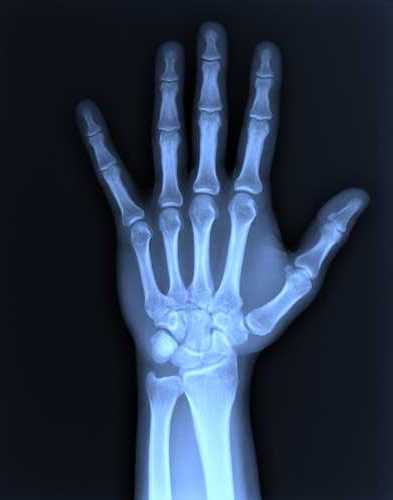This has been an incredibly exciting past few days in the world of scientific research. For those unfamiliar, the 2020 Nobel Prize winners are set to be announced this week; as of today’s writing on October 7th, 2020, three sets of award winners have already been unveiled in medicine, physics, and chemistry. Today, we’ll take a closer look at the backgrounds and distinguished research of the laureates in medicine.
On October 5th, the 2020 Nobel Prize in Medicine was jointly awarded to scientists Harvey J. Alter, Michael Houghton, and Charles M. Rice, attributed to their contributions towards the discovery of the hepatitis C virus. An interesting point to note about the trio’s joint award—it was officially written in the statutes of the Nobel Foundation that, “In no case may a prize amount be divided between more than three persons”. This limit, which was not explicitly called for by Albert Nobel in his will that established the Nobel Foundation, has often been a point of contention. Major breakthroughs and seminal discoveries in research regularly require the collaboration of various groups of scientists and colleagues. All, of course, deserving of recognition. Michael Houghton in his Nobel acceptance speech remarked that, “Great science, often, is a group of people and I think going forward we somehow need to acknowledge that”. With calls for an increased scope of recognition growing louder, it’s possible that we may see prizes awarded to larger collaborations in the future. This would require navigating the delicate balance between providing recognition to the deserving while ensuring that the prestige of the award is not diluted.
Harvey J. Alter
Photo courtesy of the National Institute of Health.
Harvey Alter’s contribution to the discovery of hepatitis C began in the mid-1970s when he studied the transmission of liver inflammation (hepatitis) stemming from blood transfusions. Prior studies had identified the hepatitis A and B viruses as potential causes. From his research, however, Alter demonstrated that most of these post-transfusion cases were in fact not due to the hepatitis A or B viruses, but rather were attributed to a new form of the virus that he and his team initially dubbed “non-A, non-B hepatitis (NANBH)”. To make this determination, he and his team had drawn blood from NANBH specimens and injected it into chimpanzees. After 14 weeks, Alter and his team discovered that the chimpanzees showed elevated liver values during routine tests, indicating the presence of a virus.
Later work, done in 1988 by Alter and his research group, confirmed the new hepatitis virus by verifying its presence in a previously stored panel of NANBH samples. In 2008, Alter was appointed as an NIH Distinguished Investigator, one of only 23 NIH scientists to receive this designation. Today, he continues to serve as a Senior Scholar at the National Institute of Health’s Clinical Center, with his research focused on transfusion medicine.
Michael Houghton
Photo courtesy of Richard Siemens/University of Alberta.
Michael Houghton’s work on hepatitis C began in 1982, while employed as a researcher at the Chiron Corporation in Emeryville, California. Utilizing and building upon the breakthroughs made by Harvey Alter in the 1970s, Houghton and his colleagues were able to successfully clone the virus by introducing viral DNA from an infected chimpanzee into bacteria. Human antibodies against the virus were then used to screen for its genetic sequence. After cloning the virus, they found that it was a new kind of RNA virus that closely resembled and was ultimately found to belong to the Flavivirus family. This represented the first time that this method of molecular biological approach had been used to identify a virus. Later in 1989, Houghton and his associates published a series of studies in Science that detailed their findings and the risks of the virus in blood transfusions. Included in these studies was an official name for the virus, “hepatitis C”.
This work ultimately led to the development of a blood screening test in 1990 for hepatitis C, which allowed for significant, widespread screening for the virus. This served to greatly reduce the number of cases of hepatitis C resulting from blood transfusions, and at present, according to the CDC, “the risk of transmission to recipients of blood or blood products is extremely low”. More recently in 2013, Houghton and his team at the Unviersity of Alberta discovered that a vaccine derived from a single strain of hepatitis C was effective against all strains of the virus. As of 2020, the vaccine is in pre-clinical trials. Today, Houghton is continuing his research on hepatitis C, serving as the Director of the La Ka Shing Applied Virology Institute at the University of Alberta.
Charles M. Rice
Photo courtesy of Rockefeller University.
Charles Rice’s contribution to hepatitis C research began while he was a researcher at Washington University in St. Louis. Rice and his team sought to address a central question that had yet to be answered by other researchers: Was the disease caused by the hepatitis C virus alone? In his studies, he first identified a portion of the hepatitis C genome that was found to be responsible for viral replication. Utilizing genetic engineering techniques, Rice and his colleagues created an RNA variant of the hepatitis C virus that included the newly defined viral replication region, while subtracting inactivating genetic variations. When this RNA variant was injected into chimpanzees, the virus was detected in the blood along with pathological changes similar to that of humans affected by the condition. Thus, they determined that the hepatitis C virus alone could indeed cause the as-yet unexplained cases of hepatitis from transfusions. Rice is highly regarded as a pioneer of novel methods for growing, replicating, and studying the hepatitis C virus. Formerly the Scientific and Executive Director of the Center for the Study of Hepatitis C, Rice today is continuing his research on HCV as a Professor at the Rockefeller University.



